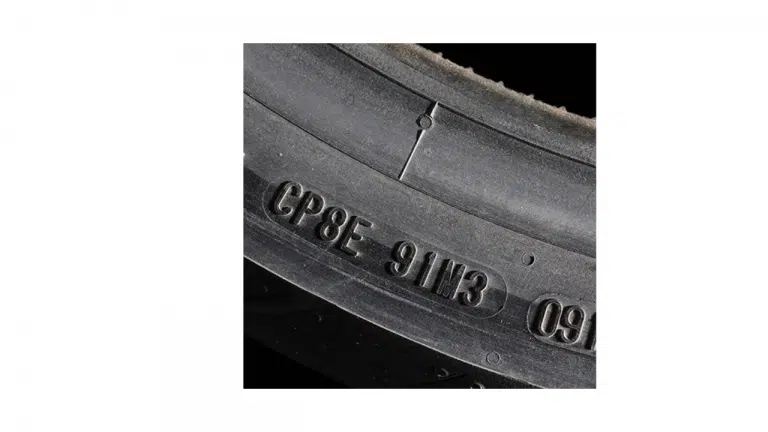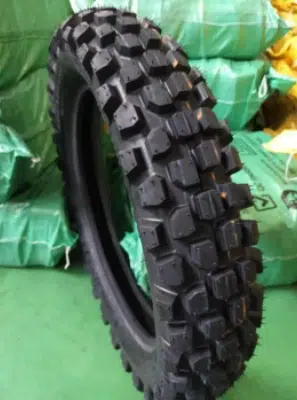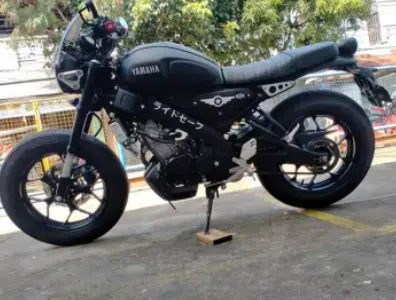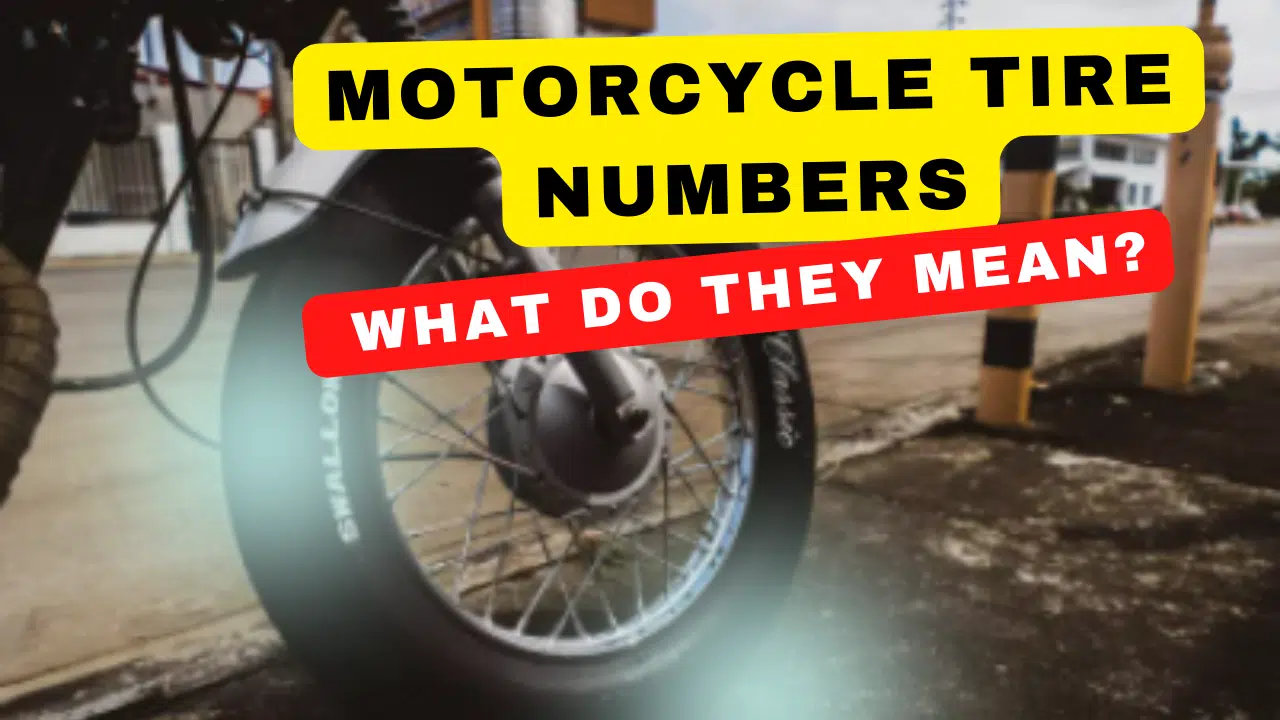You may wonder what all those motorcycle tires’ numbers mean if you’re new to motorcycles. Don’t worry. You’re not alone! Many people don’t know what the letters and numbers on a motorcycle tire mean. In this blog post, we will explain what each number and letter means so that you can be an expert when it comes to motorcycle tires!
1. What do the numbers on motorcycle tires mean?
Motorcycle tires have a lot of information printed on them. Much of it is in code, and it cannot be evident unless you know how to read it. The numbers on motorcycle tires tell you the tire’s width, aspect ratio, construction type, speed rating, and load index. Here’s a breakdown of what each number means:
Width: The width is the first number listed on the tire, measured in millimeters. For example, I would write a 200mm wide tire as “200.” The width is the measurement from one side of the tire to the other.
Aspect Ratio: The aspect ratio is the second number listed on the tire, and it is a percentage of the width. For example, an “80” aspect ratio means that the tire is 80% as tall as it is wide. A lower aspect ratio means a broader tire, while a higher aspect ratio means a taller tire.
Construction Type: The construction type is indicated by a letter following the aspect ratio. There are three main types of construction: “R” for radial, “B” for bias-ply, and “D” for diagonal. Radial tires are the most common type of tire nowadays. Bias-ply tires are less common and are mainly used on older motorcycles. Diagonal tires are even less common and are only used on old motorcycles.
Speed Rating: The speed rating is indicated by a letter following the construction type. The speed rating tells you the maximum speed the tire can safely handle. For example, an “S” speed rating means the tire can take rates up to 112 mph.

Load Index: The load index is the last number listed on the tire, and it tells you how much weight the tire can safely carry. For example, a load index of “85” means the tire can safely have 1477 lbs.
Now that you know what all the numbers on motorcycle tires mean, you can be an expert when it comes time to buy new tires for your bike!
2. How do you know when to replace your motorcycle tires?
If you ride a motorcycle, you know that having fresh, well-maintained tires is essential for safety and performance. But how do you know when it’s time to replace your tires? Here are a few things to look for:
First, check the tread depth. If the tread depth is less than 1/16 of an inch, it’s time for new tires. You can also use the “penny test”: insert a penny into the tread with Lincoln’s head facing down. If you can see all of Lincoln’s head, it’s time for new tires.
Second, check for signs of wear and tear. Look for cracks, bald spots, or any other damage to the tire. Also, be on the lookout for bulges or blisters indicating internal damage. If you see any of these signs, it’s time to replace your tires.
Finally, pay attention to how your motorcycle feels while you’re riding. If it feels like the bike is slipping or sliding, or if you notice a decrease in performance, then it’s likely that your tires are worn out.
If you’re unsure whether or not your tires need to be replaced, it’s always best.
3. What are some common problems with motorcycle tires that can lead to accidents or injuries?
Motorcycle tires are essential for a safe and smooth ride. But they can also be one of the most treacherous parts of your bike since they’re susceptible to various problems that can cause accidents or injuries. Here are a few of the most common tire problems to watch out for:
Balding: When your tires start to bald, the treads are wearing down, and there’s less surface area to grip the road. It can make it harder to control your bike, especially in wet or icy conditions.
Unbalanced: Unbalanced tires can cause your bike to vibrate, which can be uncomfortable and dangerous. If your tires are unbalanced, it’s essential to get them fixed as soon as possible.
Underinflated: Underinflated tires are more likely to suffer from flats, blowouts, and other problems. They also don’t grip the road, which can again lead to losing control. Always check your tire pressure and inflate them to the recommended level.
Overinflated tires don’t provide as much contact with the road, leading to a bumpier ride. They’re also more susceptible to punctures. Again, always check your tire pressure and inflate to the recommended level.
Worn-out tires need to be replaced as soon as possible. They don’t provide as much traction or grip, which can be dangerous.
These are just a few of the most common problems affecting motorcycle tires. If you’re having any trouble with your tires, it’s always best to consult a professional.

4. How can you prevent these problems and keep yourself safe while riding your motorcycle?
Riding a motorcycle is a great way to enjoy the outdoors and get some exercise, but it’s essential to be safe. You can do a few things to help prevent accidents and injuries while riding your motorcycle. First, always wear a helmet and proper protective gear. It will help to protect you if you are in an accident. Second, be aware of your surroundings and ride defensively. It means being aware of other motorists and road hazards and being prepared to take evasive action if necessary. Finally, practice good motorcycle maintenance. It includes everything from regularly checking your tires to making sure your bike is in good working order. By following these safety tips, you can help ensure that your next motorcycle ride is pleasant and safe.
5. How to take care of them properly?
Motorcycle tires are one of the essential parts of the bike. They need to be in good condition to provide traction and grip and absorb shocks from bumps in the road. Taking care of them properly will help extend their lives and keep your ride smooth. Here are a few tips on how to take care of motorcycle tires:
-Check the air pressure regularly. Underinflated tires can cause premature wear and tear and make the bike harder to handle.
-Inspect the tires for any signs of damage, such as cracks or bald spots. If you find any damage, it’s best to replace the tire rather than try to patch it up.
-Keep the tires clean by wiping them down with a damp cloth after every ride. It will remove any debris that could potentially damage the tires.
-Store the bike in a cool, dry place when it’s not in use. Extreme temperatures can cause the tires to deteriorate faster.
By following these simple tips, you can help to ensure that your motorcycle tires stay in good condition for years to come.
Conclusion
Now that you know all about motorcycle tire numbers, you can confidently pick the right tires for your bike. Remember to consider the type of riding you’ll be doing and the climate where you live. And most importantly, have fun! Riding a motorcycle is a great way to experience the open road. Thanks for reading our ultimate guide to motorcycle tire numbers. We hope it was helpful.






